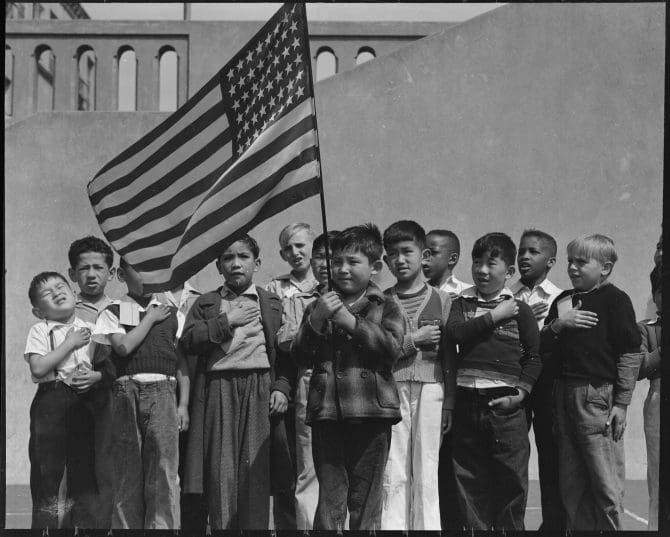Welcome to May! For many in Holland, that means Tulip Time and parades, but it's also Asian Pacific American Heritage Month. After browsing the stacks and coming up with some great options for better understanding, I found myself doing a lot of internet searching to get a better grasp on the topics. In particular, I wanted to be able to see pictures of some of the places and people that I had been reading about. Here are a few of my favorites, but you may want to start here at the Holocaust Museum's website for some background information.
If you've never read Jeanne Houston's classic memoir of the Japanese Internment camps, Farewell to Manzanar, stop here and go put it on hold. Jeanne came of age during her family's internment at Manzanar and spent years grappling with the experience before returning to the site of the camp with her own children. Ansel Adams, the beloved American photographer best known for his sweeping black and white landscapes, did a photo study of Manzanar that you can see online at the Library of Congress. The site of Manzanar now belongs to the National Parks Service, and you can visit it if you happen to find yourself in California with time on your hands, or check out the NPS's Virtual Manzanar Museum.
If you happen to be a fan of Star Trek, the name George Takei is probably familiar to you. However, many people don't know that Mr. Takei also spent time in the Japanese Internment Camps Rohwer. His graphic memoir They Called Us Enemy tells the story of his experience as a young child, as does his highly moving TED Talk, where he talks about patriotism and love for America after such an experience.
So many documents, images, and artifacts from this chapter of American History have been preserved. The Library of Congress has an entire collection of internment camp newspapers available for online perusal. The National Gallery of Art has digitized a great deal of Asian American artwork that you can visit from your computer. Likewise, although the Smithsonian exhibit came down in 2019, you can still view the artifacts on the National Museum's website.
While Executive Order 9066 is certainly not the best chapter in American History, it is a moment that has been meticulously studied and preserved for future generations in the hope that no such racial injustice will occur again. Take time browse through these collections of primary resources to bring a new level of appreciation and understanding to a lesser known chapter of American history.



